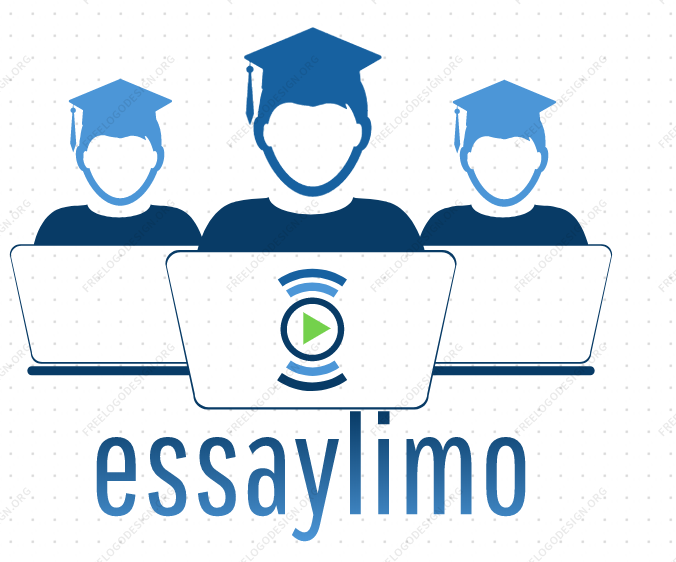All details are in attachment
1102_17t4_essay_3.docx
Unformatted Attachment Preview
English 1102
Essay 3
Requirements: Minimum 750 words
Draft Due: 4.16
Final Copy Due: 5.13
Assignment: Write an essay that defends a thesis you developed through a close critical
reading/analysis of one (or two depending on topic) literary works listed below and
supported by at least one secondary source. This essay relies mainly on textual support
from the primary text, but includes at least one secondary source that supports/sustains
the student’s argument. Do not confuse “critical analysis” with “plot summary”; the goal
is to develop, sustain, and advance a thesis based on a critique of the primary text but
supported in part by at least one secondary source.
What you’ll be graded upon:
15%
Introduction: You establish a context for the significance of your thesis in regards
to the literary work as a whole. How does your argument contribute to
understanding the author’s major literary/thematic concerns? What can other
readers learn from your analysis? How does your analysis/critique fit in with other
critical responses of the author/literary work?
15%
Thesis: You state your main point (or argument) in 1-2 sentences. The thesis is
the culmination of your introduction.
30%
Organization. Your essay should follow that of typical literary critiques:
Since your focus must be on analyzing some literary motif, theme, or a
combination of literary elements (such as symbolism, character, setting, etc.),
your essay must contain well-structured supporting paragraphs that contain a topic
sentence, quotes from the primary text, at least one quote from a secondary
source, an explanation/discussion of the significance of the quotes you use in
relation to your thesis, and a concluding sentence or two that situates the entire
paragraph in relation to the thesis. Your thesis will focus on some kind of critical
analysis of the primary text, so your supporting paragraphs should contain quotes
from the text that illustrate your thesis/argument; in addition, you should include
at least one quote from secondary source to support your argument. Your
supporting paragraphs should be organized around each of the quotes you use,
explaining the significance of the quotes and why (or how) they illustrate your
main point, but you also need to make sure that your paragraphs contain strong
transitions and at least six (or more) sentences.
10%
Conclusion: Regardless of the argument you make, you want a conclusion that
avoids summarizing what you’ve just said, and please avoid writing, “In
conclusion.…” Your aim in a conclusion is to place the discussion in a larger
context. For example, how might your critical analysis of a literary character
relate to the other characters in a work? How might your thesis be applied to other
aspects of the text, say for example, setting or symbolism?
15%
Grammar and mechanics: Your paper avoids basic grammar mistakes, such as
dropped apostrophes in possessives, subject/verb disagreement, arbitrary tense
switches, etc. The paper demonstrates a commitment to proofreading by avoiding
easy-to-catch typos and word mistakes (effect for affect, for example). The paper
adheres to MLA formatting style for in-text and bibliographic citations.
15%
Presentation: Your paper meets the minimum length criteria of 750 words, is
typed with a title and your name on it. You follow your individual professor’s
instructions for formatting (margins, placement of the name, etc).
Choice of two topics—write on only one:
Topic 1:
Analyze one soliloquy in Shakespeare’s Othello so that you can show how the speech’s
imagery helps us to understand what Iago or Othello is thinking and doing at that point of
the play. Use the discussion boards to ask questions—there is an entire section in the
discussion boards for the speeches. You are analyzing the speech to give a sense of HOW
Iago and Othello explain their thoughts—you do not want to merely summarize the
speech. As with Essays 1 and 2, this is thesis driven—you are not given a thesis here as in
Essay 1, but must invent one as in Essay 2. So, the thesis should say something about
how the speech reveals Iago or Othello’s character and what they are thinking at this
point in the play.
You will want to go through the speech and examine how each line builds up the
speech—go through it line by line (not to summarize though), to show how it all comes
together through the specific imagery in the speech.
The soliloquies are:
Iago: Act 1, Scene 3, Lines 367-88 (1.3.367-88)
Iago: 2.1.269-95
Iago: 2.3.299-325
Iago: 3.3.336-345
Iago: 4.1.93-103
Othello: 5.2.1-22
You will want to formulate a clear thesis (a statement about what you believe the speech
says or does most strikingly, in your opinion) and develop your argument showing how it
achieves this by drawing evidence from such elements as simile, metaphor,
vocabulary/diction, symbol, rhyme, etc. Use the elements discussed in the Backpack
Literature chapters and in our discussions as your guide.
Your goal is in no way here to summarize the speech. Rather, go through each line
very carefully, explaining how each image adds to the speech’s overall impact and
progress—each of Iago’s speeches shows us how his thinking is developing and how his
plan comes together. Othello’s speech shows us the result of Iago’s work on him—
Othello is possessed by the idea that Desdemona has not only been unfaithful to him, but
will bewitch and cheat on other men.
Topic 2:
In an argument using either of the following pairs of speeches, compare and contrast the
ideas expressed by either Troy or Rose in Fences. In this essay, you will want to really
dig into how Troy and Rose express themselves, what they have wanted out of life, and
what they have wanted from each other. You do not want to compare Troy’s speeches to
Rose’s—rather, look at how the characters develop and change between the two speeches
each gives. In other words, as with the first choice, your goal here is to go through the
speeches very carefully, showing how the language shows us who these characters are.
A. Troy’s speech at the end of Act 1 Scene 3 on page 1053 that begins, ‘I don’t want
him to be like me…’ down through ‘I can’t give nothing else,’ and Troy describing
his father in Act 1 Scene 4 in the long set of speeches that begins, ‘Sometimes I
wish I hadn’t known my daddy…’ on page 1058 ending with ‘the matter of a few
years’ on p 1060.
B. Rose’s speech in 2.1 that begins on page 1068 with: ‘I done tried to be everything
a wife should be. Everything a wife could be’ through to ‘don’t even know
nobody’s giving!’ on 1070, and her speech in 2.5 on page 1084 beginning with
‘You can’t be nobody buy who you are…’ to ‘the best of what’s in me.’
You will want to formulate a clear thesis (a statement about what you believe the
speeches say or do most strikingly, in your opinion, to develop the common themes) and
develop your argument showing how they achieve this by drawing evidence from such
elements as simile, metaphor, vocabulary/diction, symbol, rhyme, etc. Use the elements
discussed in the Backpack Literature chapters and in our discussions as your guide.
You MUST USE direct quotes to support a thesis in a tight, focused argument; a good
rule of thumb is one quote per paragraph. Each speech has strong elements to choose to
analyze, and I will certainly be happy to talk to each of you about possible quotes. I look
forward to reading your essays.
There is one required outside source. This source cannot be from just any author or
website—any use of a site like SparkNotes, Shmoop, eNotes, etc. will not fulfill the
requirement and should be avoided. These are not university level sources. Instead, you
must use the MLA International Bibliography—a database you must access through the
Troy Library: http://trojan.troy.edu/library/
From there, under ‘search library resources,’ select and click on ‘databases.’ You should
then see this screen:
In your browser (not the image above), click on ‘M’ then scrool down to ‘MLA
International Bibliography.’
If you are off-campus/off-site, you will be prompted to enter your Troy email address and
password for access to the database. Do so. You will then be in the MLA Bibliography
through EBSCHOhost.
When you search here, simplicity is best. Start wide–just the author’s name and/or the
title of the play. Here, I might start with Shakespeare Othello’ or ‘Wilson Fences’ and
‘linked full-text’ articles from all sources. Since most of us are not able to get to main
campus and the library, we want to search only for ‘full-text’ articles so we can read and
download them remotely.
You will need to read several articles to find one that fits your argument. Do not simply
‘drop’ a quote or two from your article into the essay—as in 1101, all outside sources
must be logically incorporated into your essay with an attributive phrase and analysis that
ties the quote to your thesis.
Here’s what that search screen should look like:
Quality research takes time. It is not easy, and results rarely fall into one’s lap. One needs
to understand that diligence and reading a lot of material that might not directly help
one’s research project is a part of the job.
Please email me with questions/ideas/problems. I am here to help!
Basic Guidelines:
•
•
•
•
•
•
•
•
Double space your essay; include your name, the course number and section at the
top of the first page
Avoid the use of the second person as it is conversational and too direct. Use the
first person to describe your own thoughts, but better to use the third person.
Introduce your poems and authors by full title and his/her full name early in the
paper. Thereafter, only use his/her last name.
Do not focus on the writing process.
Be sure that you do not simply summarize or paraphrase the speech or speeches.
Assume the reader knows the play you are talking about; your job is to help the
reader see below the surface and understand the speech or the speeches better.
Write in the present tense, but do use tenses to show chronology in the speech
itself as needed.
Always use direct quotes to support your claim, and thoroughly explain what each
quote means and why it is important to your thesis. A good rule of thumb is one
quote per paragraph.
Examine how Shakespeare and Wilson use language—including similes,
metaphors, and other comparisons, symbols, rhymes that link concepts, archaic
meanings of words and their etymologies—use the OED through the links at the
Troy library website (you pay for the subscription as part of your tuition—use it),
etc.
…
Purchase answer to see full
attachment






Recent Comments